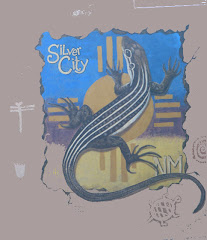 Walking up Cherry Creek Rd last Sunday, my eye captured by a spark of orange-red, I bent over and picked up a feather from a Red-shafted Northern Flicker. Brilliant orange underside with a black tip and black on the upper highlighting the orange-red shaft. We started looking around and found another and then a third, but that one with black and light on the edges which would contribute to the bird’s spotted wing markings. There weren’t enough feathers to suggest loss by violence. I tucked them into a pocket.
Walking up Cherry Creek Rd last Sunday, my eye captured by a spark of orange-red, I bent over and picked up a feather from a Red-shafted Northern Flicker. Brilliant orange underside with a black tip and black on the upper highlighting the orange-red shaft. We started looking around and found another and then a third, but that one with black and light on the edges which would contribute to the bird’s spotted wing markings. There weren’t enough feathers to suggest loss by violence. I tucked them into a pocket.Our attention now focused on the ground, we found more wonders. Two small conglomerate rocks with shiny black bits and layers that might be obsidian, since there are volcanic rock boulders plentiful. Separately, a small rock with flecks that reflected the sunlight goldly. On closer examination, that one has tiny shavings and bits of gold – whether real or fools, I can’t be sure. Either way, not enough to make a fool rich!
 My real treasure: what I have convinced myself is a spear point, with the point broken off. This area is rich in native history, going back to the Mimbres people of 900-1200 AD. I won’t begin to suggest who created this point, but I cannot be persuaded that it is not a hand-chipped spear point of someone’s design. It is shaped in a triangle with a flat surface and the other two sides forming a ridge down the center of the spear and with a waisted stem. Even without its business end, it is the size of my palm. It’s very rough and shows inadvertent dings and chips from being scraped, crushed and graded into the track that is Cherry Creek Road. Yet there are chips and flakes that are too consistent to have been inflicted by heavy road equipment.
My real treasure: what I have convinced myself is a spear point, with the point broken off. This area is rich in native history, going back to the Mimbres people of 900-1200 AD. I won’t begin to suggest who created this point, but I cannot be persuaded that it is not a hand-chipped spear point of someone’s design. It is shaped in a triangle with a flat surface and the other two sides forming a ridge down the center of the spear and with a waisted stem. Even without its business end, it is the size of my palm. It’s very rough and shows inadvertent dings and chips from being scraped, crushed and graded into the track that is Cherry Creek Road. Yet there are chips and flakes that are too consistent to have been inflicted by heavy road equipment.On an early visit to Silver City before moving here, we found a hand-flaked scraper not far as the raven flies from Cherry Creek and in an area of a known Mimbres village. The stone scraper was made of similar-looking rock. So I have reason to believe I am holding a remainder of the ancestors.
It’s Thanksgiving weekend; the holiday has brought us much to value and appreciate. Beginning last night through all day today and predicted through tomorrow, it is raining/snowing. The ground is white and everything drips. In the high desert, we’ve learned never to regret the rain. Even when it rained for 45 minutes last night, ending just as the first float of the Christmas Lights parade began down Broadway. The parade would have gone on despite rain. 26 floats long, it included warriors in camouflage and dress blues under banners reading, Home Again and warriors of a more local variety – the fire and police and the Forest Service, including Smokey Bear. The floats sponsored by local businesses were their usual razzle-dazzle of living room scenes with chimneys and decorated trees, all strung with lights. I say “usual” as a true veteran of these parades – having seen my first Christmas parade here just last year ;^D What a wonderful surprise, though: the Habitat for Humanity float took first prize for non-profit-sponsored floats. While we didn’t help construct or decorate it and there was only one rider dressed as Santa’s Elf, we could still share the pride of recognition. And after the parade, we retired to Isaac’s where our waitress had saved our pre-parade dinner table for after-parade drinks and dancing.
And in just the time it’s taken me to write these notes, the snow stopped, a blue patch opened up, allowing the sun to shine and now the snow is 50% reduced – melting away between the pinions and oaks and mahoganies. But the tops of the Pinos Altos mountains, which I can see out my office window to the northwest, still disappear into the snow cloud and soon, the blue patches will close and the moisture will begin to fall again. Tomorrow, I have to go to work. At least I don’t have far to “go.” And the Thanksgiving holiday will be over for another year. But not the thanks.




